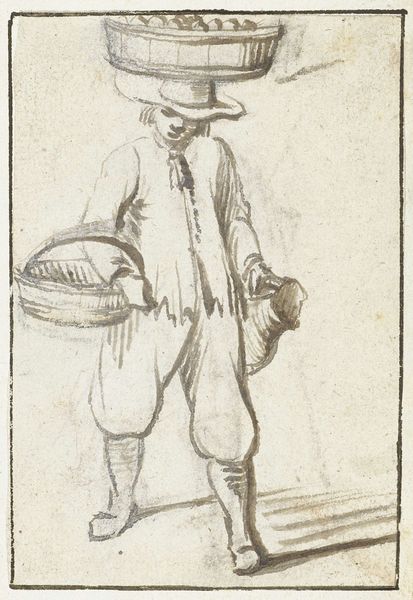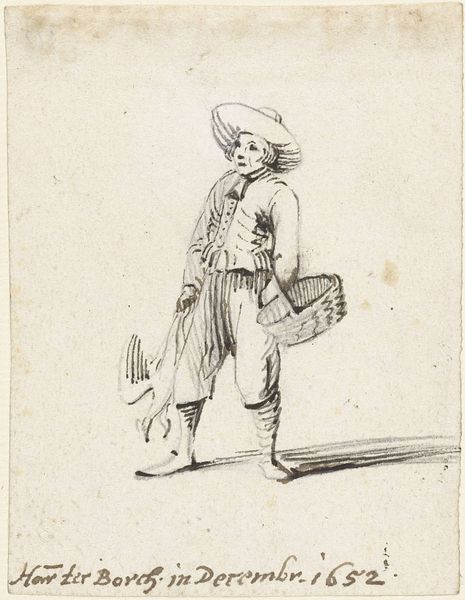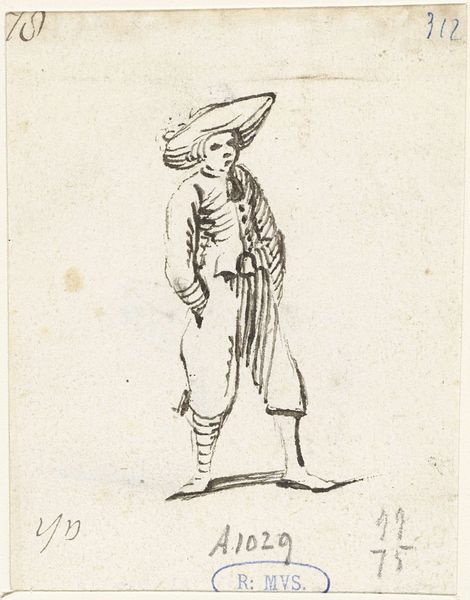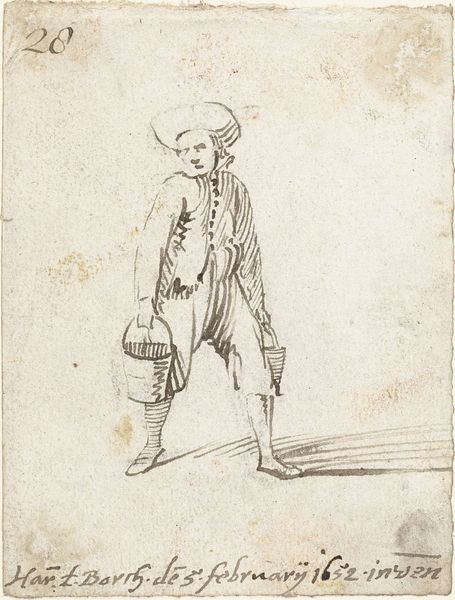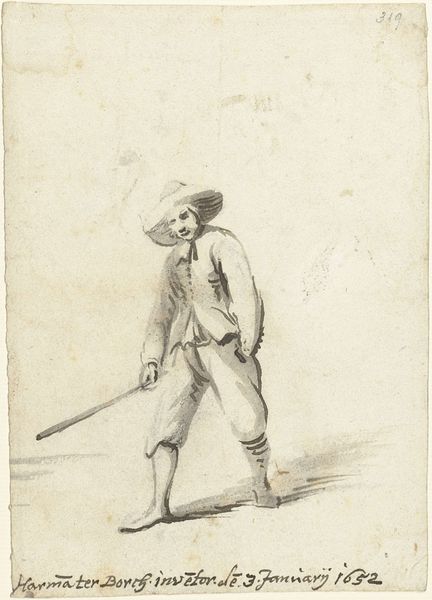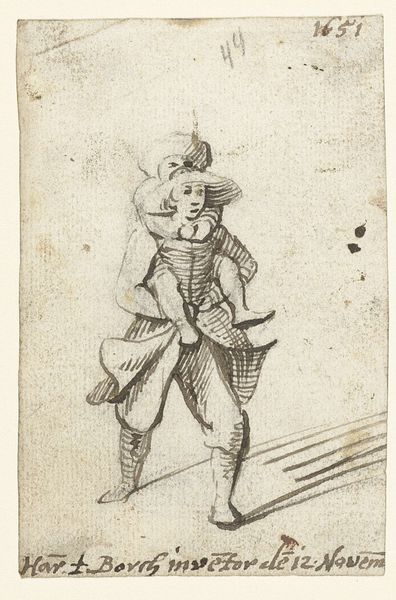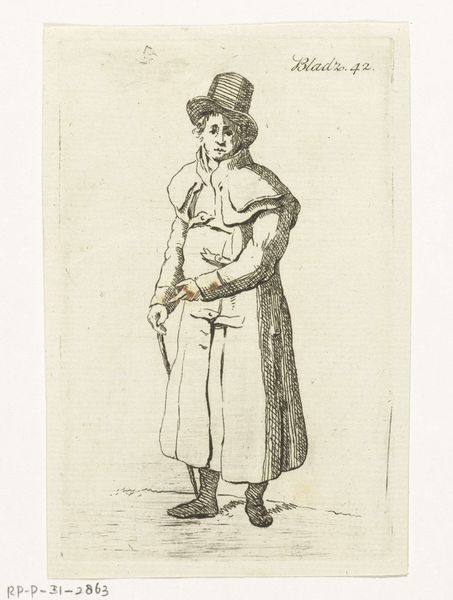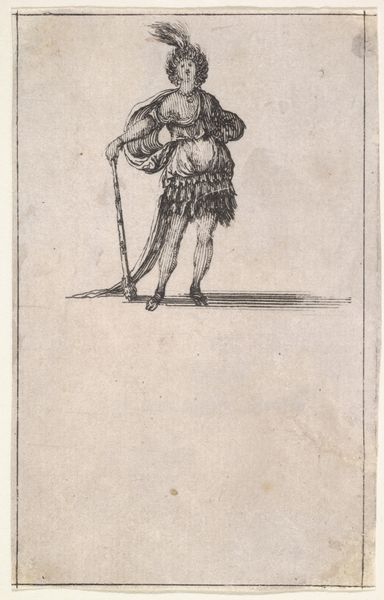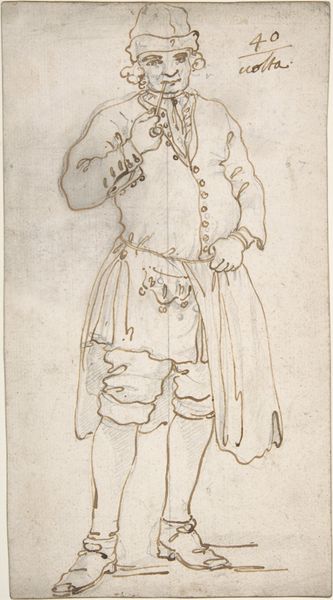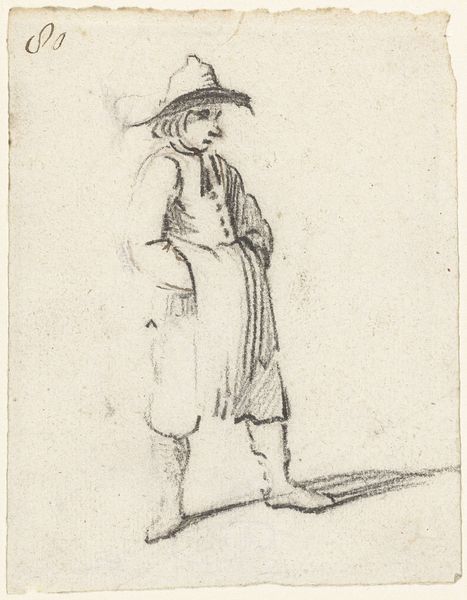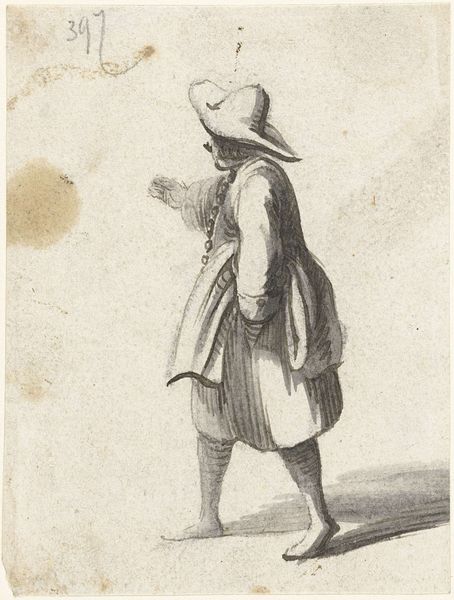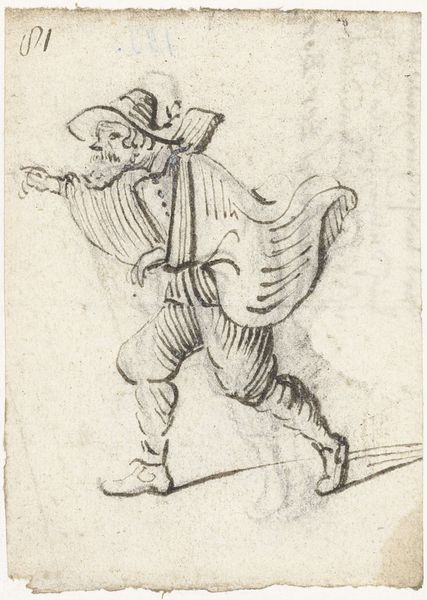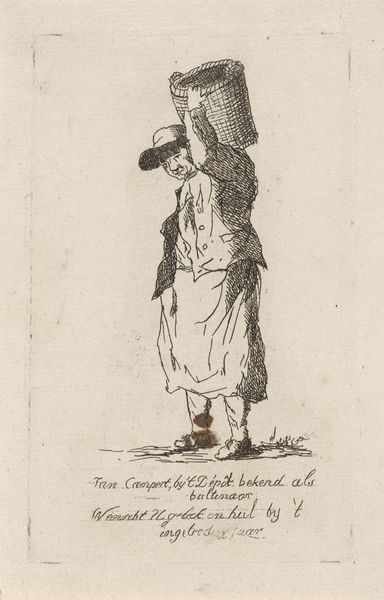
Man met een mand op zijn hoofd en een emmer in zijn hand, van voren c. 1650
0:00
0:00
drawing, pencil
#
portrait
#
drawing
#
imaginative character sketch
#
toned paper
#
light pencil work
#
quirky sketch
#
dutch-golden-age
#
pencil sketch
#
sketch book
#
personal sketchbook
#
pencil
#
sketchbook drawing
#
genre-painting
#
storyboard and sketchbook work
#
sketchbook art
#
realism
Dimensions: height 137 mm, width 97 mm
Copyright: Rijks Museum: Open Domain
Editor: Here we have "Man with a Basket on His Head and a Bucket in His Hand, from the Front," a drawing in pencil on toned paper by Harmen ter Borch, around 1650. I find the figure's stance and burdened posture quite evocative. What story do you see unfolding here? Curator: This seemingly simple sketch opens a window into the lives of working-class people in the Dutch Golden Age, doesn't it? It makes me consider how labor and its representation intersect with social status. What does it mean to depict this man so plainly, with such weight on his head, and what kind of dialogue might Ter Borch be trying to spark? Editor: It's interesting to think about representation and class. So often we focus on portraits of the wealthy from this period. The fact that this is a genre painting does signal an intention to explore social themes? Curator: Absolutely. It invites us to consider how Ter Borch, perhaps from a more privileged background, views this man. Is it an empathetic observation, or is there a subtle commentary on the social hierarchy at play? Where does power lie in the act of depicting someone? Editor: The weight he carries makes me think about the burdens people carried both physically and metaphorically. Do you think the figure’s face is intentionally left somewhat blank to make him representative of many laborers? Curator: Precisely. And that lack of specific detail perhaps becomes a statement in itself. By not individualizing him too much, Ter Borch might be pointing towards the systemic nature of labor and the shared experiences of those who perform it. Do you think that adds a layer of social critique? Editor: I do. Seeing it that way makes me appreciate the drawing much more, moving beyond just aesthetic qualities. Thanks for helping me see all those levels! Curator: It is crucial we engage with art beyond its surface and try to tease out how it makes critical interventions in historical discourses!
Comments
No comments
Be the first to comment and join the conversation on the ultimate creative platform.
